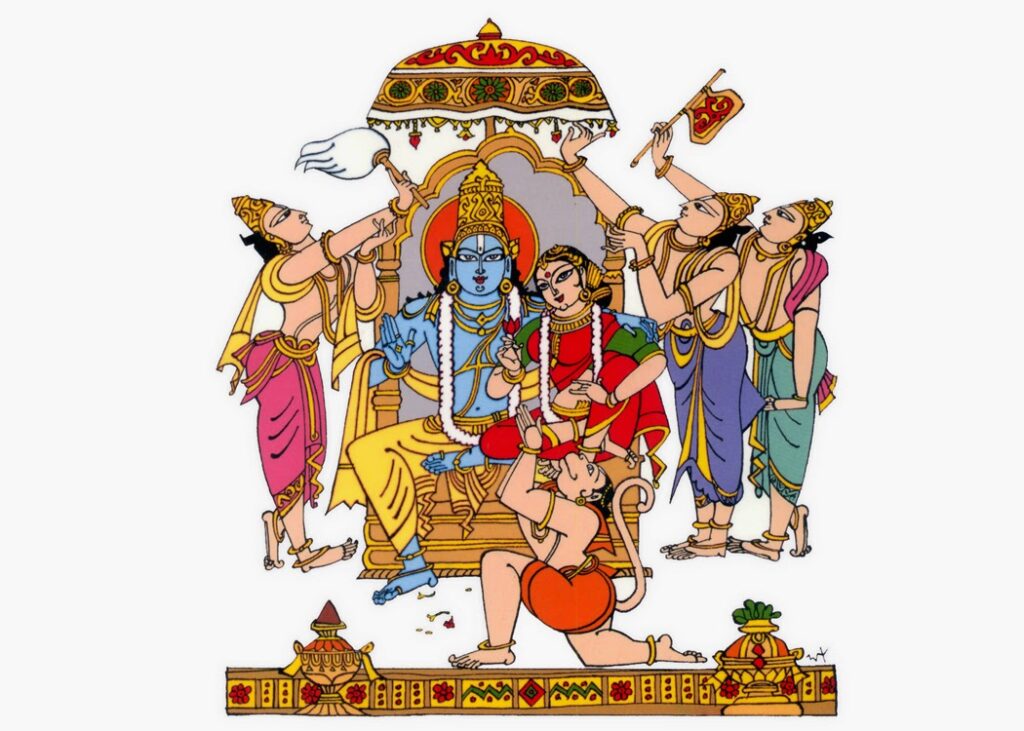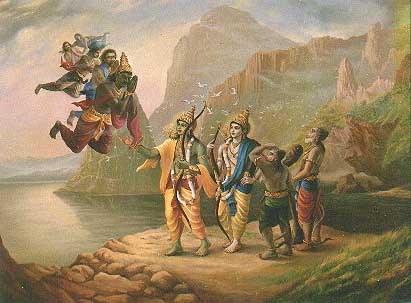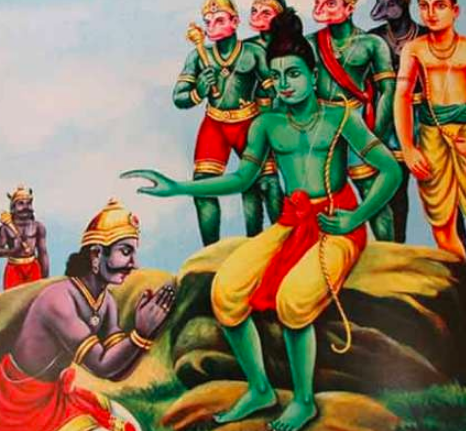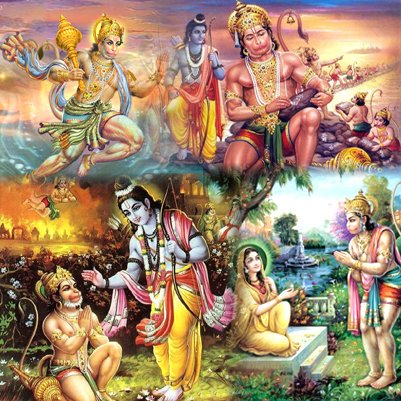Hey there! Have you ever heard of the book edition of the Odia version of the epic Ramayana by Tulsidas? Well, let me give you a quick overview. The Odia Tulsi Ramayan Sunderkand edition is a revered book that holds immense significance in the larger context of the Tulsi Ramayana.

In Odia culture, the book Tulsi Ramayana is embraced and revered for its profound teachings and spiritual messages. Sunderkand, specifically, is a pivotal chapter within this epic saga. It narrates the heroic journey of Hanuman as he embarks on a mission to find Sita, Lord Rama’s beloved wife.
The impact and popularity of the Odia Tulsi Ramayan Sunderkand among devotees cannot be overstated. Its timeless wisdom continues to inspire and guide people in their daily lives. This edition by Tulsidas has captured the hearts of countless readers with its beautiful storytelling and deep-rooted moral lessons.
So, if you’re looking to dive into an enriching spiritual experience or explore the wonders of ancient literature, the Odia Tulsi Ramayan Sunderkand is definitely worth your attention!
Great! The introduction is complete. Let me know if there’s anything else I can assist you with!
Significance of the Tulsi Ramayana in Odia culture
The Tulsi Ramayana holds immense cultural significance in the state of Odisha. Passed down through generations, it serves as a moral guide and source of inspiration for countless Odia households. This sacred scripture has not only shaped religious beliefs and practices but has also left an indelible mark on various art forms, festivals, and rituals in the region.
The deep-rooted importance of the Tulsi Ramayana is evident in every nook and corner of Odisha. It is revered as a treasure trove of wisdom that imparts valuable life lessons to individuals from all walks of life. The epic tale narrates the journey of Lord Rama, his wife Sita, and his loyal devotee Hanuman, showcasing their virtues, triumphs, and challenges. Through its vivid storytelling, the Tulsi Ramayana instills values such as righteousness, devotion, loyalty, and compassion.
In Odia households, parents often recite excerpts from the Tulsi Ramayana to their children before bedtime. These stories not only entertain young minds but also teach them important moral lessons that shape their character. As children grow older, they gain a deeper understanding of these teachings and apply them to their daily lives. The Tulsi Ramayana acts as a guiding light for individuals navigating through life’s complexities.
The influence of the Tulsi Ramayana extends beyond personal beliefs and practices. It permeates various aspects of Odia culture including art forms like dance dramas (Gotipua) and traditional songs (Geeta Govinda). Artists draw inspiration from this epic to create mesmerizing performances that captivate audiences with their grace and beauty. Festivals such as Ratha Yatra (Chariot Festival) prominently feature episodes from the Ramayana as part of their celebrations.
Rituals associated with the worship of Lord Jagannath often incorporate recitations from the Tulsi Ramayana. Devotees chant hymns and verses from this scripture to invoke blessings and seek divine guidance. The Ramayana’s influence can also be observed in the construction of temples and shrines dedicated to Lord Rama, Sita, and Hanuman throughout Odisha.
The Tulsi Ramayana has played a pivotal role in shaping Odia culture and spirituality. It has fostered a deep sense of devotion among the people, inspiring them to lead virtuous lives. Its teachings have stood the test of time, resonating with individuals across generations. Through its enduring legacy, the Tulsi Ramayana continues to enrich Odisha’s cultural fabric, reminding its people of their roots and guiding them towards righteousness.
Overview of the Tulsi Ramayan Sunderkand section
Sunderkand, an integral part of the epic Tulsi Ramayana, holds great significance in Hindu mythology. It is a chapter filled with captivating events and important characters that contribute to the overall narrative. Let us delve into this enchanting section and understand its placement, key elements, and purpose within the epic.
Sunderkand is positioned strategically in the middle of Tulsi Ramayana, serving as a pivotal point in Lord Rama’s journey. It comes after Bal Kand (the childhood phase) and before Lanka Kand (the battle with Ravana). This placement allows Sunderkand to act as a bridge connecting these two major sections of the epic.
Within Sunderkand, several noteworthy events unfold. One of the most significant moments occurs when Hanuman embarks on his mission to find Sita, Lord Rama’s beloved wife who has been abducted by Ravana. Hanuman’s courage, strength, and devotion are showcased as he crosses vast oceans and overcomes various obstacles during his search for Sita.
The character of Hanuman takes center stage in Sunderkand. His unwavering loyalty towards Lord Rama shines through as he encounters numerous challenges along his path. From facing powerful demons to navigating treacherous terrains, Hanuman’s determination remains unshaken throughout his quest.
Apart from Hanuman, other essential characters also make appearances in Sunderkand. Jambavantha, Angada, Sugriva, and Vibhishana all play crucial roles in aiding Hanuman during his journey. Their collective efforts demonstrate the power of unity and teamwork while emphasizing their unwavering support for Lord Rama.
The inclusion of Sunderkand serves multiple purposes within Tulsi Ramayana. Firstly, it highlights the exemplary qualities possessed by Hanuman – devotion, courage, intelligence – inspiring readers to emulate these virtues in their own lives. Sunderkand showcases the unwavering love between Lord Rama and Sita, reinforcing the significance of true love and devotion.
Furthermore, Sunderkand acts as a source of motivation for individuals facing challenges in their personal lives. Hanuman’s determination to overcome all obstacles serves as a reminder that with faith and perseverance, one can triumph over adversity.
Analysis and Interpretation of Sundarkand in Tulsi Ramayana
A critical examination of Tulsidas’ portrayal and interpretation of Sundarkand reveals the depth and nuance with which he approached this section of the Ramayana. Tulsidas, a renowned poet and saint from medieval India, added his unique touch to the epic tale through his poetic style, language usage, and storytelling techniques.
In comparing Tulsidas’ rendition with other versions or interpretations from different regions or languages, it becomes evident that he brought his own perspective to the Sundarkand. While staying true to the core narrative, Tulsidas incorporated elements that resonated with the cultural context of his time. This includes references to local customs, traditions, and beliefs that may not be found in other renditions.
Tulsidas’ poetic style shines through in his portrayal of the Sundarkand. He masterfully weaves together words and phrases to create vivid imagery that captivates readers. His use of similes, metaphors, and alliterations adds depth and beauty to the narrative. Moreover, Tulsidas skillfully employs rhyme schemes and rhythmic patterns to enhance the musicality of his verses.
The language usage in Tulsi Ramayana’s Sundarkand showcases Tulsidas’ proficiency in Sanskrit as well as his command over vernacular languages like Awadhi (a dialect spoken during that era). He seamlessly blends these languages to create a harmonious fusion that appeals to both scholars and common folk alike. This linguistic prowess adds another layer of richness to Tulsidas’ interpretation.
One notable aspect of Tulsidas’ version is its emphasis on bhakti (devotion) towards Lord Rama. Throughout Sundarkand, Tulsidas highlights Hanuman’s unwavering dedication towards Rama by portraying him as an epitome of loyalty and devotion. The emotional depth conveyed through Hanuman’s actions serves as a source of inspiration and devotion for readers.
Tulsidas also deviates from other renditions in certain sections of Sundarkand. For instance, he expands on Hanuman’s encounter with Surasa, the mythical serpent goddess. Tulsidas adds intricate details to this episode, showcasing his storytelling prowess and ability to engage readers through suspenseful moments. These unique elements contribute to the overall richness and distinctiveness of Tulsi Ramayana’s Sundarkand.
Key themes and lessons from Tulsi Ramayan Sunderkand
Prominent themes in Sundarkand
Sundarkand, a significant section of the Odia Tulsi Ramayan, beautifully portrays various prominent themes that continue to resonate with readers and devotees today. One such theme is devotion, which is exemplified through the unwavering dedication of Lord Hanuman towards Lord Rama. As he embarks on his mission to find Sita in Lanka, Hanuman’s devotion is depicted as boundless and unshakeable. This serves as an inspiration for readers to cultivate deep devotion in their own lives.
Courage is another central theme depicted in Sundarkand. Hanuman’s fearless journey across the ocean, his encounters with formidable demons, and his ability to overcome obstacles showcase immense bravery. His courage becomes a symbol of strength for individuals facing challenges in their own lives. Through Hanuman’s example, Sundarkand teaches us that true courage lies not only in physical prowess but also in mental fortitude.

Faith is yet another crucial theme explored in Sundarkand. Lord Hanuman’s unwavering belief in the righteousness of Lord Rama and his commitment to fulfilling his duty demonstrate the power of faith. Despite facing numerous adversities during his search for Sita, Hanuman never wavers in his faith and ultimately succeeds in accomplishing his mission. This highlights the importance of having faith even when faced with seemingly insurmountable obstacles.
Lessons derived from Sunderkand
Sundarkand, available in Odia PDF format, imparts valuable lessons on righteousness, loyalty, friendship, and sacrifice. The narrative emphasizes the significance of leading a righteous life by adhering to moral principles and upholding dharma (righteousness). Lord Rama serves as an embodiment of righteousness throughout the epic, inspiring readers to follow a path guided by ethics and integrity.
Loyalty is exemplified through Hanuman’s unwavering allegiance to Lord Rama. Despite being capable of overthrowing the demon king Ravana single-handedly, Hanuman remains steadfast in his loyalty and carries out his duties as a humble servant. This teaches us the importance of staying loyal to our loved ones and fulfilling our responsibilities with utmost dedication.
Friendship is another vital lesson derived from Sundarkand. The bond between Lord Hanuman and Lord Rama showcases the true essence of friendship. Their unwavering support for each other, their willingness to go to great lengths for one another’s well-being, and their mutual trust serve as an inspiration for cultivating deep and meaningful friendships in our own lives.
Sundarkand also emphasizes the significance of sacrifice. Hanuman’s selfless acts, such as setting Lanka ablaze with his tail to create chaos among the demons, demonstrate his willingness to make personal sacrifices for the greater good. This teaches us that sometimes we need to let go of our own desires and comforts for the benefit of others.
Moral and ethical teachings
Embedded within the narrative of Sundarkand are numerous moral and ethical teachings that guide readers towards righteous conduct. The epic encourages individuals to embrace virtues such as honesty, humility, compassion, and forgiveness. It highlights the consequences of unethical actions while emphasizing the rewards that come with leading a virtuous life.
Comparing different versions of Sunderkand in Odia language
The Odia Tulsi Ramayan Sunderkand holds a special place among the various regional and linguistic renditions of this epic. It not only captures the essence of the original text but also adds unique features, variations, and interpretations that make it distinct. Let’s delve into the world of Sunderkand in Odia and explore how cultural nuances and linguistic choices impact storytelling in different versions.
One noteworthy aspect of the Odia rendition is its emphasis on preserving traditional storytelling techniques while infusing local flavor. The use of vivid descriptions, poetic language, and rhythmic verses enhances the narrative experience for readers. This version beautifully incorporates elements from Odisha’s rich cultural heritage, creating a seamless blend between the epic tale and local traditions.
In comparison to other regional renditions, the Odia Tulsi Ramayan Sunderkand showcases subtle variations in interpretation. These differences arise from cultural influences, historical context, and linguistic choices specific to Odisha. For instance, certain characters may be portrayed with distinct characteristics or motivations unique to Odia culture. These variations add depth to the story and offer readers a fresh perspective on familiar events.
The linguistic choices made in the Odia version contribute significantly to its distinctiveness. The language used is rich with metaphors, idioms, and colloquial expressions that resonate with native speakers. This not only enhances readability but also deepens the emotional connection between readers and the narrative. The choice of words reflects an understanding of how language shapes storytelling and allows for a more immersive experience.
Cultural nuances play a vital role in shaping different versions of Sunderkand across languages. In the case of Odia rendition, it highlights specific aspects of Odisha’s customs, rituals, and folklore that are seamlessly woven into the narrative fabric. These cultural references provide readers with a glimpse into local traditions while staying true to the overarching themes present in Tulsi Ramayan.
The Odia Tulsi Ramayan Sunderkand stands as a testament to the richness and diversity of regional interpretations of this epic. It showcases the ability to preserve its distinct flavor while staying faithful to the original text. Through careful attention to cultural nuances, linguistic choices, and unique variations, the Odia rendition brings forth a captivating narrative that resonates with readers.
The cultural and religious impact of Tulsi Ramayan Sunderkand
The enduring influence of Tulsi Ramayan Sunderkand on religious practices, rituals, and festivals in Odisha is undeniable. This section of the epic has played a significant role in shaping local traditions, beliefs, and customs among devotees. Moreover, it has inspired various forms of performing arts such as music, dance, and drama.
Sundarkand, also known as Sunderkand, holds a special place in the hearts of Lord Rama’s followers in Odisha. You can find a sunderkand odia pdf for download. Considered a sacred text, it is revered with immense devotion and respect. The recitation or chanting of Sundarkand is believed to bring blessings and protection from evil forces. Many devotees regularly organize the Sunderkand path (recital sessions) at their homes or temples as a way to seek spiritual solace and divine intervention.
The impact of Tulsi Ramayan Sunderkand can be seen during various festivals celebrated in Odisha. For instance, during the auspicious occasion of Rama Navami, which commemorates Lord Rama’s birth anniversary, devotees gather to recite Sundarkand together. The recital is often accompanied by devotional songs dedicated to Lord Rama and Hanuman. This practice not only strengthens the bond between communities but also fosters a sense of unity among devotees.
In addition to its religious significance, Tulsi Ramayan Sunderkand has influenced the performing arts scene in Odisha. It has inspired numerous musical compositions that narrate the events described in this section of the epic. These compositions are performed with traditional instruments like sitar, harmonium, tabla, and mridangam. The soul-stirring melodies evoke deep emotions among listeners while conveying the essence of devotion depicted in Sundarkand.
Furthermore, dance dramas based on Tulsi Ramayan Sunderkand have captivated audiences across Odisha for decades. Renowned dance troupes incorporate graceful movements and expressive gestures to depict the heroic deeds of Lord Hanuman. These performances not only entertain but also educate the audience about the virtues of devotion, loyalty, and courage.
The cultural impact of Tulsi Ramayan Sunderkand goes beyond religious practices and performing arts. It has become an integral part of Odia literature and language. Many poets and writers have drawn inspiration from this section of the epic, incorporating its themes into their works. The influence can be seen in various literary genres, including poetry, prose, and drama.

Insights on Odia Tulsi Ramayan Sunderkand
We have analyzed and interpreted the Sundarkand in Tulsi Ramayana, uncovering its key themes and lessons. We have compared different versions of Sunderkand in the Odia language and discussed its cultural and religious impact.
By understanding the importance of the Tulsi Ramayan Sunderkand in Odia culture, you gain a deeper appreciation for this sacred text. The stories and teachings within it offer valuable insights into life, morality, and spirituality. Whether you are a devotee seeking spiritual guidance or simply interested in exploring different cultures, delving into the world of Odia Tulsi Ramayan Sunderkand can be an enriching experience.
FAQs
What is the significance of reading Tulsi Ramayan Sunderkand?
Reading Tulsi Ramayan Sunderkand holds great significance as it is believed to bring blessings, protection, and spiritual growth. It is said to invoke Lord Hanuman’s presence and his divine qualities such as strength, courage, devotion, and wisdom.
Can I read Tulsi Ramayan Sunderkand even if I don’t understand Odia?
Yes! Even if you don’t understand Odia language completely, reading or listening to Tulsi Ramayan Sunderkand can still be beneficial. You can follow along with translations available in various languages or seek interpretations from scholars who can help you grasp the essence of this sacred text.
Are there any rituals associated with reading Tulsi Ramayan Sunderkand?
While there are no strict rituals associated with reading Tulsi Ramayan Sunderkand, it is often considered auspicious to begin with a prayer or invocation to Lord Hanuman. Lighting incense or offering flowers as a mark of respect is also common. However, the most important aspect is to approach the reading with reverence and a sincere heart.
Can I find audio or video recordings of Tulsi Ramayan Sunderkand?
Yes, there are several audio and video recordings available online that feature recitations of Tulsi Ramayan Sunderkand in Odia. These can be a wonderful way to immerse yourself in the divine vibrations of this sacred text and enhance your spiritual experience.
How long does it take to read Tulsi Ramayan Sunderkand?
The time it takes to read Tulsi Ramayan Sunderkand may vary depending on the pace at which you read and your level of familiarity with the text. On average, it may take around 1-2 hours to complete reading this section. However, it is not necessary to rush through it; instead, focus on understanding and absorbing its teachings at your own pace.
Author Profile

Latest entries
- 28 June 2025BlogHow to Choose the Best High-Yield Savings Account with 5%+ Interest in India (2025 Guide)
- 28 December 2024BlogTop 6 Employee Management Software for Small Businesses
- 19 December 2024BlogShri Hanuman Chalisa in Hindi Text with English Translation
- 7 August 2024BlogTop 13 Online Master of Social Work Programs

